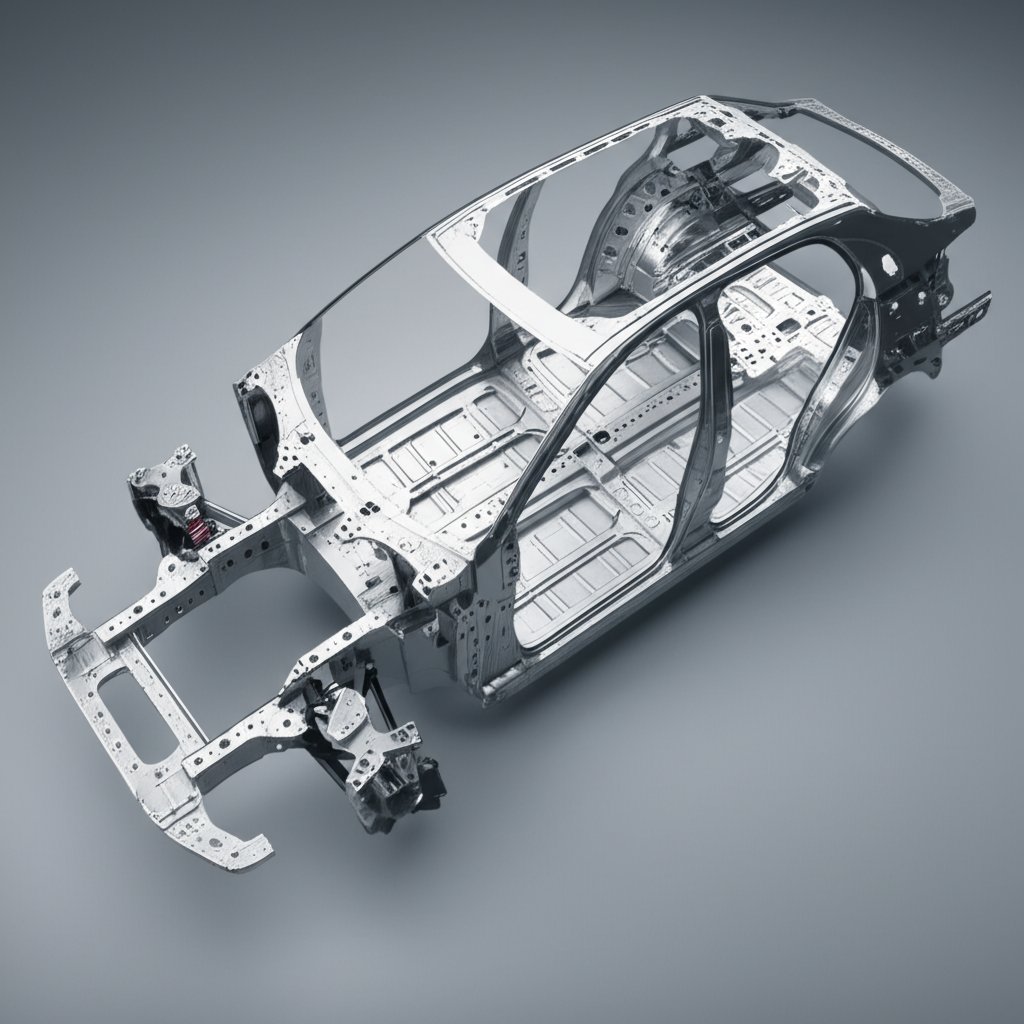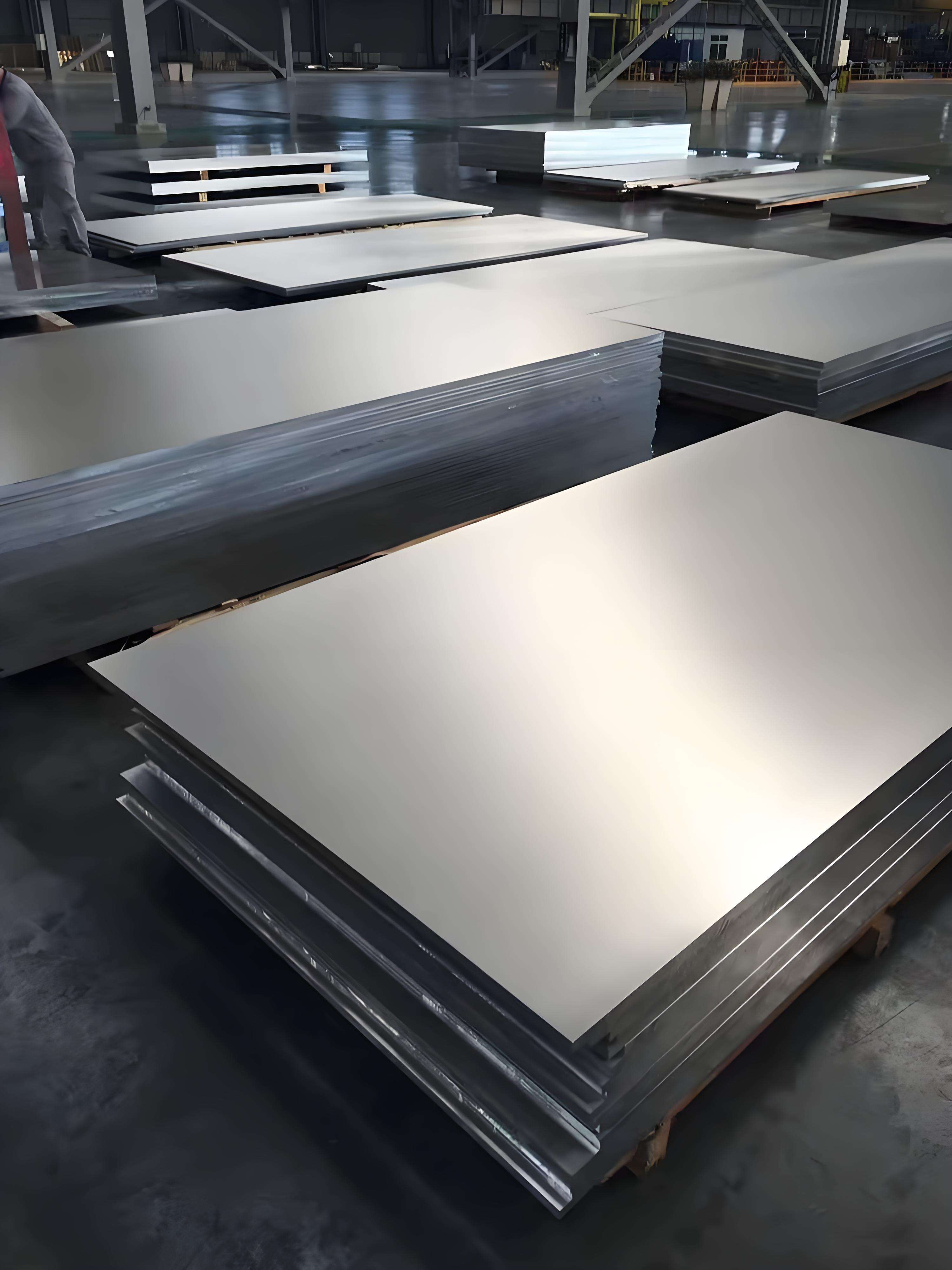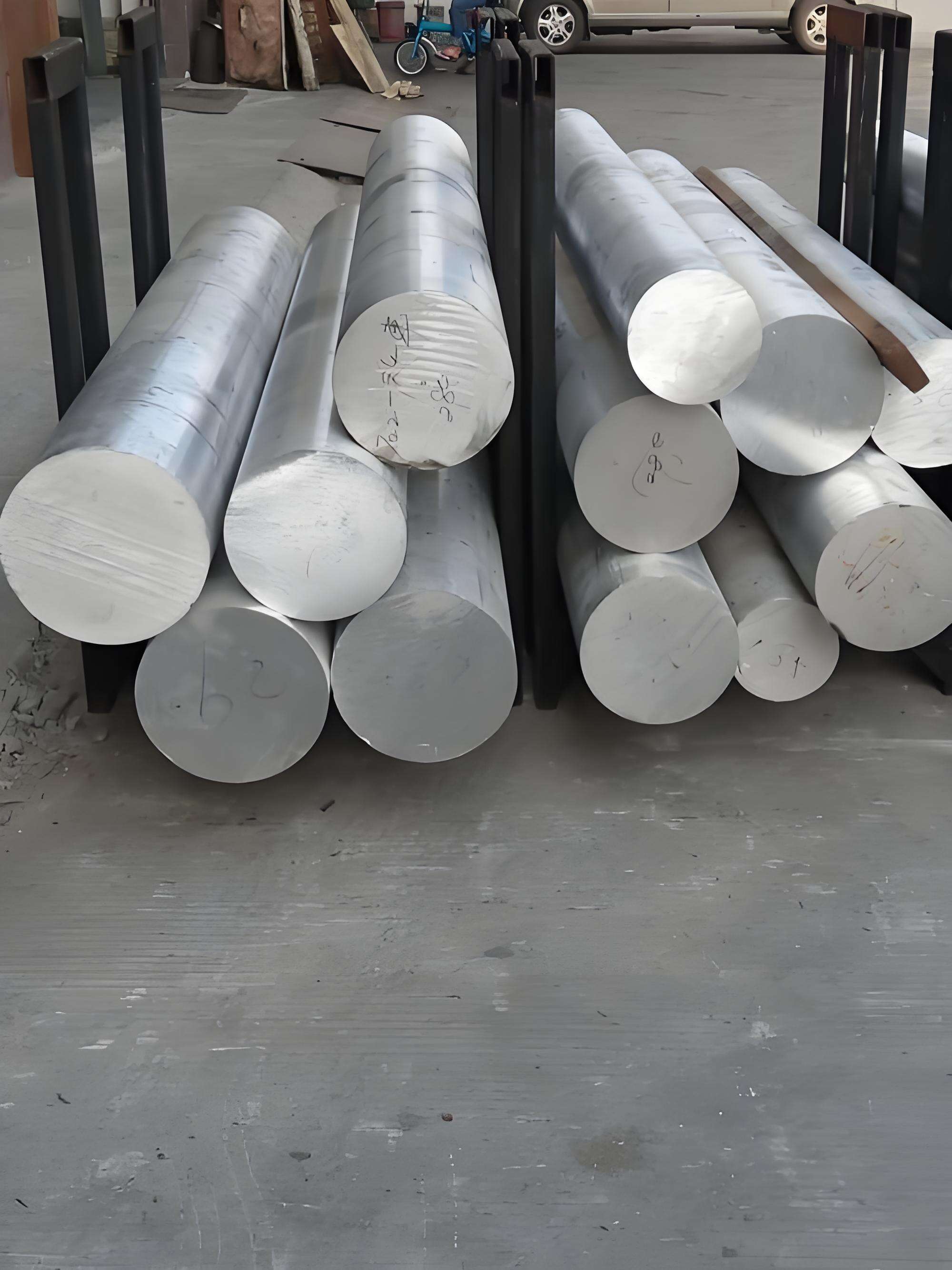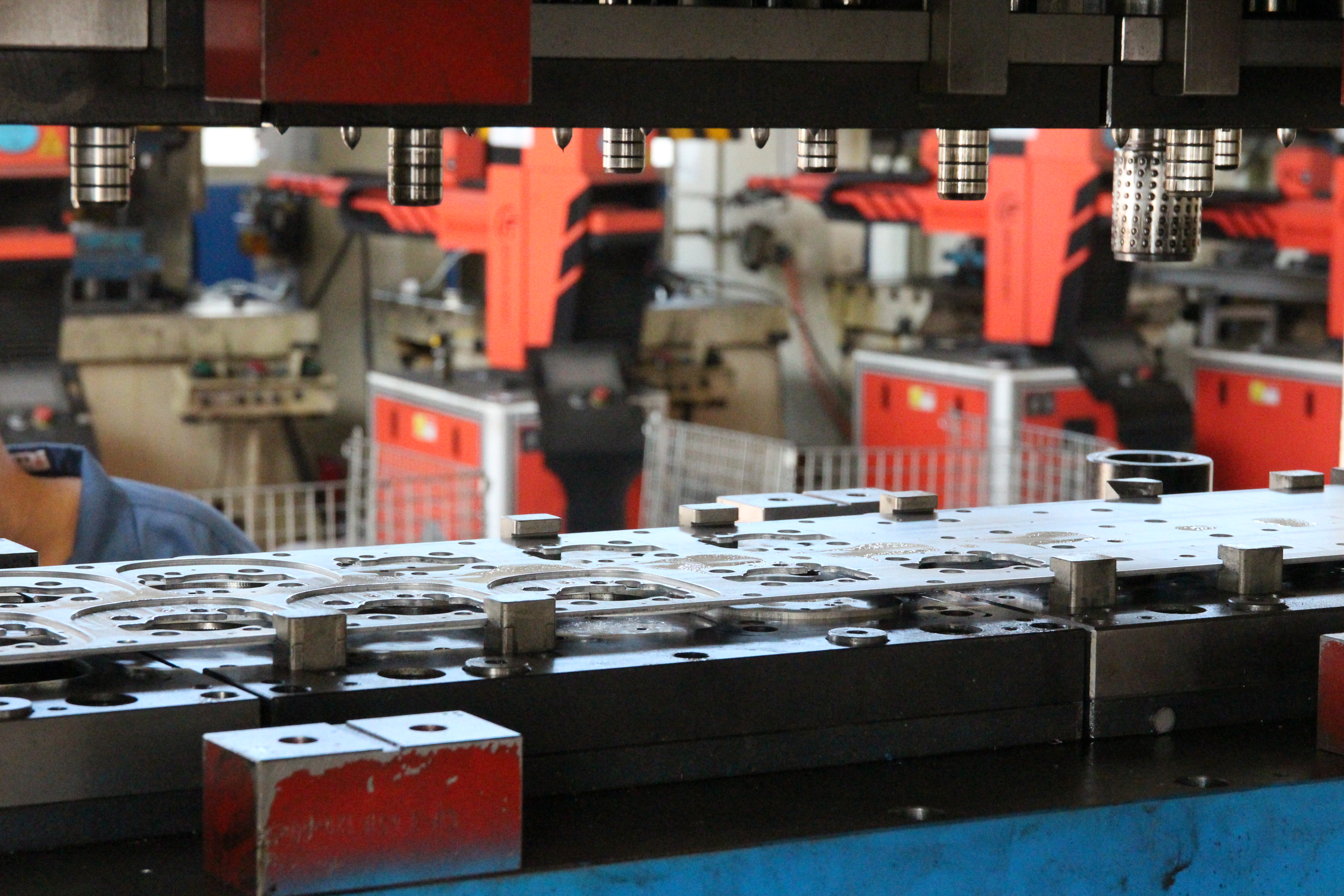6061 Vs 7075 Aluminum For Automotive Applications: Make The Right Call

Deciding Between 6061 and 7075
Why this choice matters for safety, cost, and lead time
When you’re mapping out the next generation of lightweight vehicles, the question of 6061 vs 7075 aluminum for automotive applications is more than academic. The decision directly shapes crashworthiness, manufacturability, and the bottom line. Sounds complex? It is—but getting it right is key to balancing stiffness-to-weight, crash energy absorption, fatigue life, joining feasibility, and total landed cost.
- Design engineers: Prioritize crash safety, stiffness, and geometry flexibility
- Procurement/buyers: Focus on cost, supply chain resilience, and specification compliance
- Manufacturing leads: Value formability, joining options, and process reliability
Success starts at the intersection of material selection, forming, and joining—align your alloy choice with your manufacturing process from day one to avoid late-stage compromises.
Where 6061 and 7075 fit in modern vehicle architectures
Imagine a vehicle’s skeleton: not every bone does the same job. That’s why 6061 aluminum and 7075 aluminum each have their sweet spots. 6061, known for its excellent weldability and good formability, typically excels in:
- Extruded chassis rails and crossmembers
- Crash boxes and battery enclosures
- Roof bows and structural mounts
Meanwhile, 7075—famed for its superior strength and hardness—finds its niche in:
- Forged suspension knuckles and control arms
- High-stress brackets
- Motorsport and performance-critical components
Both alloys deliver the classic lightweight advantage of aluminum density lb/in3, but the differences in 6061 aluminum properties and 7075’s strength profile drive unique fit for each subsystem.
Key decisions you will make in 2025
Looking ahead, your team will face trade-offs shaped by evolving standards, electrification, and the push for sustainability. Selection logic will revolve around:
| 6061 Aluminum | 7075 Aluminum |
|---|---|
| Excellent weldability | Limited weldability |
| Good formability | Lower formability |
| Balanced strength for structural parts | Peak strength for compact, forged parts |
| Cost-effective, widely available | Higher cost, used where strength is paramount |
Later sections will dive into fatigue and fracture toughness, temper selection, and joining playbooks—drawing on references like ASM Handbooks, ASTM B221/B209, AWS D1.2, and SAE guidance. For now, remember: the right alloy isn’t just about properties on paper. It’s about how those properties translate into real-world performance, cost, and manufacturability for your specific automotive application.

How to Fairly Evaluate Aluminum Alloys for Automotive Components
Criteria used to rank alloy-product options
When you face the challenge of selecting between material 6061 t6 aluminum and 7075-t6 for a vehicle component, the right choice starts with transparent, repeatable criteria. Imagine you’re building a decision matrix—what matters most? Here’s a practical sequence to guide your evaluation:
- Forming route compatibility: Can the alloy be easily extruded, forged, or stamped into your target geometry?
- Joining path: Will you rely on FSW (friction stir welding), MIG/TIG welding, riveting, or adhesives? Some alloys, like aluminum 6061, are far more weldable than others.
- Fatigue behavior: How does the material handle repeated loading? Look for qualitative S–N curve tendencies and consider the impact of welds or notches.
- Fracture toughness: Is the alloy forgiving under sudden impacts or cracks?
- Corrosion resistance and repairability: Will the part face road salts, humidity, or require easy field fixes?
- NVH (Noise, Vibration, Harshness): Can the alloy’s stiffness and damping help minimize unwanted noise or vibration?
- Cost and availability: Is the alloy widely available in your region? Does it fit your budget and supply chain constraints?
Standards and references to consult
To ensure fair comparisons, always cross-check your choices against trusted standards and specs. Here’s a quick reference table that connects each criterion to typical OEM checkpoints and the most relevant industry standards:
| Criterion | OEM Checkpoint / Spec |
|---|---|
| Forming route compatibility | ASTM B221 (extrusions), ASTM B209 (sheet/plate) |
| Joining path | AWS D1.2 (aluminum welding), SAE joining guidelines |
| Fatigue & fracture | ASM Handbooks (fatigue/fracture), OEM S–N curve benchmarks |
| Corrosion/repair | OEM durability specs, ASTM corrosion test methods |
| NVH | OEM NVH standards, SAE acoustic test procedures |
How we weigh manufacturing realities
Sounds like a lot? It is, but each factor ties directly to real-world outcomes. For example, aluminum 6061 material properties—such as weldability and formability—make it a strong candidate for extruded structural members, where complex shapes and robust joints are essential. In contrast, 7075-t6 shines in forged, high-load parts where ultimate strength outweighs joining flexibility.
- O temper: Chosen for parts needing extensive forming, thanks to high ductility and ease of shaping.
- T6 temper: Preferred for in-service strength, where mechanical performance is critical.
- T73 temper: Used when enhanced stress-corrosion resistance is essential for durability.
Understanding temper selection is key—each step alters aluminum 6061 composition and performance, so always match temper to your forming and service needs.
Remember, for most structural members, weldability and formability take top priority, while compact, highly loaded forgings demand maximum strength and toughness. Next, we’ll dive deeper into how 6061 T6 extrusions deliver a balanced solution for automotive structures, and what that means for your workflow.
Best Overall
Your applications: Where 6061-T6 aluminum shines
When you’re building the backbone of a modern vehicle, you want a material that’s as versatile as it is reliable. That’s where 6061-t6 aluminum steps in as the go-to choice for extruded structures. Imagine side rails, subframes, battery enclosures, roof bows, and mounting brackets—all demanding a balance of strength, formability, and cost-effectiveness. These components are the “connective tissue” of the chassis, and 6061 T6 delivers the properties that keep them light, robust, and easy to join.
For automotive teams weighing 6061 vs 7075 aluminum for automotive applications, the 6061 family is the workhorse for extruded rails, crossmembers, battery trays, and crash boxes. Its combination of weldability and formability makes it the first pick for parts that need to be joined and shaped efficiently.
Why it works for extruded chassis and body structures
What makes 6061 t6 aluminum so effective? It comes down to its unique blend of properties. According to industry experts, aluminum alloy 6061 properties include excellent corrosion resistance, good machinability, and high strength—all without sacrificing the ability to form complex shapes through extrusion. This means you can design lightweight, intricate profiles that meet demanding stiffness and packaging requirements without the compromises of more brittle or unweldable alloys.
Extruded 6061 T6 also supports a range of joining methods—welding, riveting, and adhesives—giving you the flexibility to optimize for crash performance, NVH, or cost. And because the alloy is widely available and recyclable, it fits seamlessly into sustainability initiatives and global supply chains.
Pros and cons you should weigh
Pros
- Excellent weldability for MIG, TIG, and friction stir welding (FSW)
- Good formability—enables complex, lightweight extruded shapes
- Strong corrosion resistance for long service life
- Balanced strength for most structural needs
- Cost-effective and widely available
- Supports a variety of surface finishes and treatments
Cons
- Not as strong as 7075 in compact, forged parts
- Requires careful temper planning for optimal strength after forming
- May need surface prep for best adhesive bonding results
Choosing a weldable temper and planning for post-weld inspection can significantly improve fatigue outcomes in structural joints—don’t overlook this step when specifying 6061 T6 extrusions.
Manufacturing and joining guidance
How do you get the most from 6061-T6 aluminum properties in your workflow? Start by forming your extrusions in the O or W temper if complex bending or shaping is required, then age to T6 for in-service strength. This temper strategy allows for crisp bends and minimal cracking, followed by a boost in mechanical performance once aging is complete. For joining, 6061 T6 excels with:
| Joining Method | Fit with 6061 T6 Extrusions |
|---|---|
| FSW (Friction Stir Welding) | Excellent, minimal distortion and strong, fatigue-resistant joints |
| MIG/TIG Welding | Very good, especially with proper filler and weld prep |
| Riveting | Good, especially for mixed-material assemblies |
| Adhesive Bonding | Good, with correct surface preparation |
Well-designed fillets and smooth transitions at joints help maximize fatigue life. Compared to higher-strength but less weldable options, 6061 T6’s fracture toughness means it’s more forgiving under real-world loads and accidental impacts. Tailored extrusion geometry also brings NVH benefits, letting you tune stiffness and damping for a quieter, more comfortable ride.
For teams seeking a proven, integrated supplier, Shaoyi Metal Parts Supplier stands out as a leading source of aluminum extrusion parts for automotive applications. Their expertise spans extruded rails, crossmembers, battery trays, and crash boxes—making them a valuable partner when choosing between 6061 and 7075 for your next platform.
By leveraging t6061 aluminum properties and the flexibility of extrusion, you can meet demanding automotive targets for safety, cost, and manufacturability. Next, we’ll explore how 7075 T6 excels in forged suspension and knuckle applications where ultimate strength is the top priority.

Best for Peak Strength
Where 7075 Shines in Chassis and Suspension
When you’re chasing the ultimate blend of strength and weight savings—think forged knuckles, control arms, or motorsports brackets—7075 t6 aluminum stands out as a top performer. Imagine the demands on a suspension knuckle: high loads, repeated impacts, and the need to keep unsprung mass as low as possible. This is where the unique attributes of 7075 aluminium alloy make a real difference. Its high zinc and magnesium content, combined with the T6 heat treatment, delivers a strength-to-weight ratio that’s tough to match, especially when compared to 6061 aluminum in similar applications.
Pros and Cons for Durability and Service
Pros
- Exceptional strength—ideal for compact, highly loaded forged parts
- High fatigue resistance under repeated, high-cycle loading
- Good machinability for tight-tolerance components
- Solid corrosion resistance, especially with proper coatings
- Low 7075 aluminum density supports aggressive weight reduction
Cons
- Limited weldability—fusion welding is not recommended for primary structures
- More sensitive to stress-corrosion cracking than 6061 (can be mitigated with T73 temper)
- Requires precise forging and heat treatment for optimal properties
- Higher cost and less formability than 6061
Checklist: Forging-Friendly Design and Inspection
- Design with generous radii to reduce stress concentrations and improve fatigue life
- Align grain flow with principal load paths for maximum toughness
- Control surface finish—smooth surfaces minimize crack initiation
- After machining, inspect for cracks, incomplete die fill, and dimensional accuracy
- Apply compatible coatings or sealants to boost corrosion resistance
Fatigue and Fracture Considerations
Sounds tough? It is. But when you need a part that can survive high-cycle loading and resist deformation, 7075 t6 aluminum yield strength is a clear advantage. Forging densifies the metal and aligns the grain structure, further enhancing both strength and fatigue resistance. However, you’ll notice that 7075 is more notch-sensitive than 6061, which means careful attention to fillet radii and surface finish is critical. In environments where stress-corrosion cracking is a concern—like exposed suspension parts—using the T73 temper can offer additional assurance.
Qualitatively, 7075’s S–N behavior shows high endurance under repeated loads, but sharp notches or poor surface prep can undermine this advantage. That’s why forged 7075 is often reserved for parts where geometry and load paths can be tightly controlled, and where joining can rely on bolted, interference, or adhesive-assisted methods instead of welding.
Manufacturing and Inspection Notes
To get the best from 7075 vs 6061 in your workflow, focus on:
- Strict temperature control during forging—avoid overheating to maintain grain structure
- Post-forging heat treatment—ensure full T6 properties or consider T73 for added corrosion resistance
- Non-destructive inspection after machining—look for internal and surface defects
- Final finishing with compatible coatings to prevent galvanic corrosion, especially in mixed-metal assemblies
In summary, 7075 aluminum yield strength and low density make this alloy a go-to for forged suspension parts where mass, strength, and fatigue life are non-negotiable. While it can’t match 6061’s weldability or formability, its performance in compact, highly loaded automotive applications is hard to beat. Next, we’ll examine how 6061 extrusions take the lead for weldable subframes and crash structures where joining flexibility and energy absorption are just as critical as strength.
Best for Weldable Subframes
Ideal Component Types for 6061 Extrusions
When you’re designing subframes, crash boxes, or battery tray frames, you need a material that’s both strong and easy to join. That’s where 6061 aluminum alloy extrusions outshine other options for automotive body-in-white structures. Imagine the front subframe of an EV or the crossmembers that tie together a sedan’s chassis—these parts demand the right balance of lightweight, stiffness, and crash energy absorption. Hollow 6061 extrusions deliver all three, while supporting cost-effective fabrication and robust joining flexibility (Aluminum Extruders Council).
Pros and Cons for Body-in-White Integration
Pros
- Excellent weldability (FSW, MIG, TIG) for integrated assemblies
- Supports complex, hollow shapes for torsional and flexural stiffness
- Good corrosion resistance—naturally forms a protective oxide layer
- Lightweight, with aluminum density 6061 enabling aggressive mass savings
- Well-established supply chain and rapid tooling for extrusions
- Readily adaptable to multi-material joints (riveting, adhesives)
Cons
- Lower ultimate strength than 7075 in compact forged parts
- Requires careful process control to minimize distortion during welding
- May need additional surface prep for best adhesive bonding
Fatigue, Fracture, and Crash Behavior
Sounds complex? It can be, but 6061 aluminium extrusions are engineered for predictable, progressive collapse in crash events. By incorporating crush initiators—such as through-hole discontinuities or geometric triggers—engineers can tune the collapse mode from global bending to localized folding and splitting. This approach not only lowers the peak crush load (reducing force spikes on occupants), but also increases total energy absorption and improves crush force efficiency, making it ideal for crash boxes and energy-managing subframes (ScienceDirect).
Well-designed fillet radii at joints and transitions minimize stress concentrations, enhancing fatigue life under repeated loads. Compared to 6061 t6 aluminum vs 7075, 6061’s fracture behavior is more forgiving, especially when welds or notches are present. This makes it a safer bet for large, joined structures where impact and fatigue performance are critical.
Joining Playbook for Production
| Joining Method | Process Notes | Inspection Suggested |
|---|---|---|
| FSW (Friction Stir Welding) | Excellent for long, flat seams; low distortion; minimal heat input | Visual, dye penetrant |
| MIG/TIG Welding | Standard for thick sections; control heat to avoid distortion | Visual, dye penetrant |
| Riveting | Good for mixed-material joints; prep holes for fit-up | Torque audit, visual |
| Adhesive Bonding | Requires surface cleaning and roughening; cure control | Visual, cure verification |
To get the most from 6061 properties in production, start with extrusion in a soft temper (O or W) if significant forming is needed. After shaping, age the part to T6 for full strength before final joining. Carefully manage distortion and springback by using robust fixturing and process windows. Post-weld and post-thermal cycle inspections—such as dye penetrant testing—are essential to catch cracks or defects early.
Typical use cases for material 6061 aluminium extrusions in automotive structures include:
- Front and rear crash boxes
- Crossmembers and subframes
- Battery tray frames for EVs
- Seat and interior structural supports
In summary, when comparing 6061 t6 aluminum vs 7075 for body-in-white and crash structures, the weldability, formability, and tailored crash performance of 6061 aluminium make it the clear choice for most subframes and energy-absorbing components. Next, we’ll look at how 6061 sheet and plate routes support formed panels and brackets—where post-forming heat treatment can recover strength without compromising geometry.

Best for Formed Panels
When to Choose 6061 Sheet and Plate for Formed Parts
Ever wondered what makes a battery enclosure lid or a floor reinforcement panel both light and tough? The answer often lies in the forming route and post-processing of aluminum alloy 6061 sheet and plate. When your design calls for deep-drawn shapes, complex brackets, or shields that must retain strength after forming, 6061 in O temper—followed by heat treatment to T6—offers a practical solution. This approach lets you form intricate geometries without cracking, then recover the high strength needed for in-service performance. It’s the go-to for panels and brackets where moderate thickness, stiffness, and corrosion resistance are all non-negotiable.
Pros and Cons for Stamping and Deep Drawing
Pros
- High formability in O temper—supports deep drawing and complex bends
- Strength is recoverable via post-forming heat treatment (to T6)
- Excellent corrosion resistance—ideal for exposed underbody and enclosure parts
- Consistent surface quality for paint or adhesive bonding
- Wide range of available thicknesses and sheet sizes
Cons
- Requires careful heat-treatment workflow—risk of distortion during quenching
- Dimensional requalification is often needed after aging
- Lower as-formed strength until T6 temper is restored
Temper Planning and Heat-Treatment Workflow
Sounds complex? Here’s how the process works in real-world automotive manufacturing:
- Form in O temper: Start with annealed (O temper) 6061 sheet for maximum ductility. This enables tight bends and deep drawn shapes without cracking.
- Solution heat treat: After forming, heat the part to the solutionizing temperature to dissolve alloying elements evenly throughout the matrix (The Fabricator).
- Quench: Rapidly cool the part, usually in water, to lock the elements in place and prevent premature precipitation.
- Age (precipitation harden): Reheat at a lower temperature to trigger precipitation, restoring high strength (T6 temper).
Dimensional control during quenching and requalification after aging are essential—always verify critical features after heat treat to ensure part performance and fit.
Surface Finish, Corrosion, and NVH Considerations
6061 offers not just strength, but a naturally corrosion-resistant surface—especially when finished with modern automotive coatings or conversion layers like Ti/Zr or electrostatic oil. This makes it ideal for panels and shields exposed to harsh environments. The smooth, high-quality surface also promotes strong adhesive bonds, supporting multi-material joints and riveted assemblies.
From an NVH (Noise, Vibration, Harshness) perspective, the moderate stiffness of 6061—reflected in its aluminum 6061 young's modulus—helps dampen vibration without excessive weight. This is especially useful for floor panels and shields where both acoustic comfort and structural integrity matter.
Fatigue and Fracture Notes: Design for Durability
What about brackets with notches and bends? Research shows that incremental forming and carefully controlled process parameters can actually improve the fatigue life of 6061-T6 panels compared to unprocessed sheet (PMC). Still, always design with fatigue in mind:
- Avoid sharp corners—use generous fillet radii to reduce stress risers
- Plan for smooth transitions at bends and cutouts
- Inspect for surface defects after forming and heat treatment
For mixed-material assemblies, adhesive bonding and rivets are both effective—just ensure proper surface prep for reliable joint strength. Typical applications of aluminium alloy 6061 sheet and plate include:
- Battery enclosure lids and thermal shields
- Brackets and mounting plates
- Floor reinforcements and underbody panels
- Interior shields and protective covers
By leveraging the full forming-to-aging workflow, you’ll maximize both durability and manufacturability—making 6061 the clear choice for formed panels and brackets in next-generation vehicles. In the next section, we’ll compare these strategies head-to-head with 7075 solutions across key component types, so you can make the right call for every subsystem.
6061 and 7075 Selection Matrix for Automotive Teams
Head-to-Head Selection Matrix by Component
When you’re deep in the weeds of design, it’s not always clear which alloy fits best. Need a quick, apples-to-apples look at 6061 aluminum vs 7075 aluminum for automotive use? The matrix below distills the essential trade-offs—helping you match material to component, joining method, and performance target. Notice how the promoted solution leads the list, underscoring where it adds the most value.
| Solution / Alloy | Key Features | Forming Route | Joining Path | Fatigue & Fracture | Corrosion / Repair | Typical Components |
|---|---|---|---|---|---|---|
| Shaoyi 6061 T6 Extrusions | Excellent weldability, good strength, cost-effective | Extrusion, bending, stamping (O → T6) | FSW, MIG/TIG, riveting, adhesives | Forgiving, good fatigue/fracture toughness | Strong corrosion resistance, easy to repair | Subframes, crash boxes, rails, battery trays |
| 7075 T6 Forgings | Peak strength, high fatigue resistance | Forging, machining | Bolted, interference fit, adhesives (no welding) | High endurance, more notch-sensitive | Moderate resistance, needs coating for harsh use | Knuckles, control arms, compact brackets |
| 6061 T6 Sheet/Plate (Formed) | Formable, strength recoverable after aging | Stamping, deep drawing, O → T6 | Riveting, adhesives, MIG/TIG | Good fatigue, handles notches well | Excellent, especially with coatings | Panels, shields, brackets, floor reinforcements |
Fatigue and Fracture Toughness Implications
Ever wondered why 6061 vs 7075 is such a hot topic? The answer lies in real-world durability. 6061’s balanced toughness and weldability mean it tolerates welds, forming, and even moderate abuse—making it ideal for large, joined structures. 7075, on the other hand, boasts higher strength and fatigue resistance, but it’s less forgiving at notches and welds, and more sensitive to stress-corrosion cracking unless carefully treated. In short: 6061 is your friend for complex, welded assemblies; 7075 rules where compact, forged strength is king.
Manufacturing and Joining Compatibility at a Glance
- For extruded structures (rails, subframes): 6061 T6—especially from a partner like Shaoyi—offers unrivaled joining and forming flexibility.
- For compact, high-load parts: 7075 T6 forgings deliver unmatched strength but require bolted or interference joints.
- For formed panels: 6061 T6 sheet/plate allows deep drawing and post-forming heat treatment for strength recovery.
- Always cross-check with ASTM B221 (extrusions), ASTM B209 (sheet/plate), AWS D1.2 (aluminum welding), and ASM Handbooks for specification and inspection guidance.
Rule of thumb: Prioritize weldability and forming for large structures—think 6061 T6 extrusions; chase ultimate strength for compact forgings—think 7075 T6. The best choice always fits your joining workflow and end-use environment.
- 6061 aluminum vs 7075: 6061 wins for joined, formed, and welded assemblies; 7075 excels in high-strength, forged parts.
- Consider al 7075 vs 6061 for every subsystem—don’t just default to the strongest alloy.
- Manufacturability and repairability can outweigh raw strength in real-world automotive programs.
Now that you’ve seen the head-to-head, the final chapter will distill these findings into actionable recommendations—component by component—so you can specify with confidence for your 2025 program.
Making the Right Alloy Call for 2025 Automotive Programs
Recommended Choices by Subsystem
When you’re finalizing your bill of materials, it’s easy to get lost in the specs. So, let’s break it down by subsystem—where each alloy and temper delivers the best value for real-world automotive applications. Imagine you’re mapping out your next EV platform or chassis refresh; here’s a clear, actionable guide:
-
Extruded Rails, Crossmembers, Crash Boxes, Battery Trays: Choose 6061 T6 extrusions.
Why? Excellent weldability (FSW, MIG/TIG), good balance of strength, and cost-effectiveness. FSW (friction stir welding) is especially recommended for joining, providing robust, fatigue-resistant seams. Engage Shaoyi Metal Parts Supplier early for DFM and to align geometry, temper, and joining strategy—this ensures your design is optimized from the start for aluminum 6061 vs 7075 workflows. -
Forged Knuckles, Control Arms, Compact Suspension Brackets: Go with 7075 T6 forgings.
Why? Ultimate strength and high 7075 yield strength make it ideal for highly loaded, compact parts. Use bolted or interference joints to avoid weldability issues, and consider T73 temper for environments prone to stress-corrosion cracking. -
Formed Panels, Brackets, Shields: Opt for 6061 O to T6 sheet/plate.
Why? High formability in O temper, strength recoverable after post-forming heat treatment (T6). Ideal for battery enclosure lids, floor panels, and brackets. Use rivets or adhesives for joining when possible.
Joining and Inspection Checklist
Want to avoid costly rework? Here’s a practical checklist for building robust assemblies—no matter which alloy you pick:
- Edge prep: Clean and deburr all joining surfaces for optimal bonding and weld quality.
- Heat input control: Monitor and limit heat during welding, especially with 6061, to maintain the yield strength of 6061 t6 aluminum and prevent distortion.
- Adhesive cure verification: For bonded joints, ensure full adhesive cure per spec before moving to final assembly.
- Torque validation: For bolted joints (common with alloy 7075 t6), always perform torque audits to confirm preload and prevent loosening under vibration.
- Post-join inspection: Use visual, dye penetrant, or non-destructive testing as appropriate—especially for critical load paths.
Specification Snippet for Drawings
Need to call out alloys and tempers on your prints? Use industry-standard language for clarity and compliance with ASTM:
"Material: Aluminum Alloy 6061-T6 per ASTM B221 (for extrusions) or ASTM B209 (for sheet/plate). All welding to comply with AWS D1.2. For forged suspension components: Aluminum Alloy 7075-T6 per ASTM B221."
Imagine you’re reviewing a drawing—this snippet ensures everyone from procurement to QA knows exactly what to source, process, and inspect.
Ultimately, the choice between 6061-t6 vs 7075-t6 must fit your joining plan, service environment, and repair strategy. Consider the al 6061 modulus of elasticity for NVH and stiffness, and always weigh the 7075 yield strength advantage for compact, high-load parts. For most large, welded structures, 6061 T6 is the safe bet; for suspension and compact forged parts, 7075 T6 leads on strength. Align your pick with program targets, joining workflow, and supplier capability—starting with an expert partner like Shaoyi ensures you’re ready for success in 2025 and beyond.
6061 vs 7075 Aluminum for Automotive Applications: FAQs
1. What are the main differences between 6061 and 7075 aluminum in automotive applications?
6061 aluminum is valued for its excellent weldability, good formability, and balanced strength, making it ideal for extruded automotive structures like subframes and crash boxes. In contrast, 7075 aluminum offers superior strength and fatigue resistance, which is best suited for compact, forged components such as suspension knuckles and control arms. While 6061 is easier to join and shape, 7075 is preferred where ultimate strength is critical but weldability is less important.
2. When should I use 6061 aluminum instead of 7075 in my vehicle design?
Choose 6061 aluminum for parts that require welding, forming into complex shapes, or need to be produced cost-effectively at scale—such as chassis rails, battery enclosures, and crash structures. Its balanced properties and ease of manufacturing make it a top choice for large, joined assemblies. For areas where joining flexibility and crash energy absorption are key, 6061 is the preferred option.
3. Why is 7075 aluminum not recommended for welded automotive structures?
7075 aluminum has limited weldability and is more susceptible to cracking and reduced strength in welded zones. It is also more sensitive to stress-corrosion cracking, especially in environments where the structure is exposed to harsh conditions. Therefore, it is typically used in forged, non-welded parts where strength and fatigue resistance are prioritized, and assembly relies on bolted or interference-fit joints.
4. How can a supplier like Shaoyi help with aluminum alloy selection for automotive parts?
Shaoyi provides end-to-end support for automotive aluminum parts, including expert engineering advice to help you choose between 6061 and 7075 based on your component's requirements. Their IATF 16949 certified processes, digital manufacturing systems, and rapid prototyping ensure you get optimized, high-quality extrusions or forgings tailored to your design, manufacturability, and budget needs. This guidance helps reduce risk and streamlines the path from concept to production.
5. What standards should be referenced when specifying 6061 or 7075 aluminum for automotive use?
Key standards include ASTM B221 for extrusions, ASTM B209 for sheet and plate, and AWS D1.2 for aluminum welding. Referencing these ensures material and joining processes meet automotive requirements. For fatigue and fracture considerations, consult ASM Handbooks and relevant SAE guidelines. Proper specification helps guarantee performance, safety, and compliance in your final product.
 Small batches, high standards. Our rapid prototyping service makes validation faster and easier —
Small batches, high standards. Our rapid prototyping service makes validation faster and easier — 
